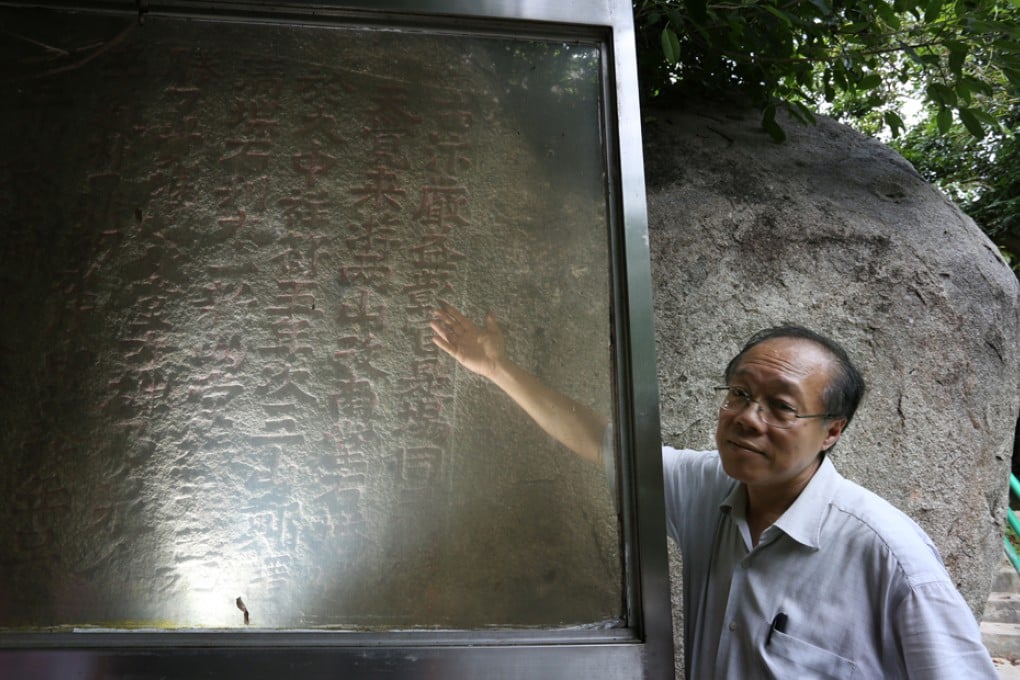Sai Kung rock may hold key to To Kwa Wan relics’ history
While the archaeological finds along the new Sha Tin-Central link have caused a stir, a rock that may shed light on the discoveries stands largely unnoticed in a quiet corner of Sai Kung.

While the archaeological finds along the new Sha Tin-Central link have caused a stir, a rock that may shed light on the discoveries stands largely unnoticed in a quiet corner of Sai Kung.
It bears a 740-year-old inscription that documents salt production in Hong Kong back in the Southern Song dynasty (AD1127 to AD1279). It is the oldest-dated inscription known in Hong Kong.
The rock, on a slope above the 748-year-old Tin Hau Temple at Joss House Bay, is a declared monument under legal protection. The text – still mostly legible – states that the inscription was carved on July 20, 1274, upon the request of resident Lin Daoyi.
It documents a visit to two nearby temples by the official in charge of the local salt administration, Yan Yizhang, of today’s Kaifeng city in Henan province, and a friend.
The rock’s testimony to the existence of a salt production administration may shed light on the Song Dynasty remnants found on the site of the new To Kwa Wan station in Kowloon City, according to Polytechnic University historian Dr Ho Koon-wan, a Song dynasty specialist.
“I would prudently say that the remnants unearthed in Kowloon City might have been the site of the office of Kwun Fu Cheung, the official salt production unit in the Song dynasty … The wells and nullah do not look like part of residences of common people,” he said.